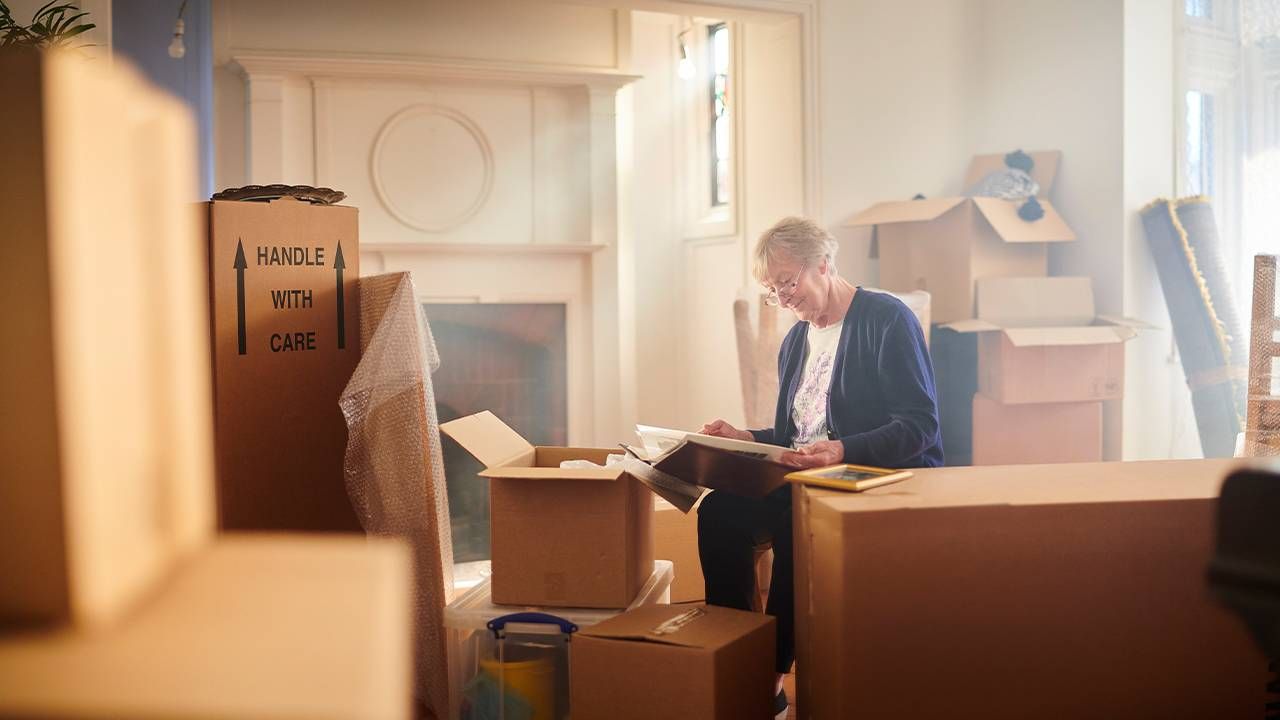Downsizing – What to Save, What to Keep and What Your Kids Don’t Want
After you’ve cleared out the clutter, made donations to charity and let your kids take what they want, what’s next?

When you're downsizing your home, it can suddenly seem like the things you own are a burden. You can't take all your furniture with you, and some of the smaller items may need to go as well. After you've cleared out the clutter, made donations to charity and let your kids take away what they want, what's next?
Moving is stressful, but when you're downsizing, there's an added level of complications. You're not just packing, you also have to sort through your belongings and get rid of things. Having a guide can help prepare you for this and, hopefully, reduce your stress levels while you sort through a lifetime of possessions. Here's some guidance on what to save, what to keep and what to do with the rest.
A Blueprint for Downsizing
For lots of folks who find themselves in your situation, it helps to start with looking at what you want to save. After that, you'll want to decide what should go with you to your new home. Then, it's onto everything that remains after you've completed the first two steps. Read on to learn what that process looks like.
Quick Tip: Before you start the process of downsizing, you may want to have a plan for staying mentally strong. Click here to read 5 Tips for Staying Sane When Downsizing Your Home for Retirement.
The Things You Want to Save
Things you want to save aren't necessarily the things you will be taking with you to your new home. Instead, they're items that you just can't bear to throw out, such as family heirlooms. These may include:
- Items that have sentimental value
- Anything that triggers a happy memory
- Your child’s incredible painting of a forest she drew in 2nd grade might be something to save
- Things that can’t ever be replaced, like photos
- Of course, documents like records, property titles, car titles, old tax forms and medical records
- Fine jewelry and heirloom jewelry — you can keep it, sell it or give it to your kids
- Small furniture, furniture that’s beloved, and useful furniture that would fit in a smaller space
Start the process for sorting through paperwork early. Otherwise, you're transporting a mess that you may never go through once you've moved.
Things You'll Need to Keep
Now we whittle down the "Save" list and cherry pick what you're going to take with you. Here's a typical scenario for someone who is downsizing:
- Since your kids won’t want your old tax forms, you’ll need to keep them and take them with you.
- However, for the other items, see if your kids would like them. Even old grade school papers and artwork might be of interest to them (or to their kids).
- Those happy reflection items might also give your kids a nice memory, so see if they’d like to take them. These items can include anything from scrapbooks and photo albums to that old conch shell you collected on a family vacation in 1982.
For more advice on what to keep, read these 8 tips for downsizing your home and keeping what is truly important.
The Things Your Kids Don't Want
Now we start cutting down the piles by going through the process again. Your kids have visited, you've presented your "Things to Save" items and they've made their decisions. They've hauled away what they can take and now you're left with what you'd like to save. Can you take all of it with you?
If not, it's time to make some decisions yourself. Do you really need to save it all? Heirloom jewelry is often a sticking point because it's beautiful, it's sentimental and it might have value. But if you will never wear it, why keep it? This is where you learn to let go and part with things. See about selling the jewelry you don't absolutely love and haven't worn in more than five years.
Here are items that might be useful to keep even if your kids don't want them:
- Supplies: Keep your kitchen and bathroom basics. You know what you really use on a regular basis. Sell or give away the rest.
- Toiletries: Yes, beauty supplies and unexpired medicine are easily replaceable, but they also tend to be a little expensive.
- Picture frames: This may sound silly and most people don’t think of this when they’re downsizing, but picture frames are incredibly valuable. For one, they turn a “living space” into a real home. Secondly, they can be expensive.
Now we can give you a leg up on the process by revealing a list of items that most kids don't want. Millennials and Gen X-ers may have a different style aesthetic, so what you feel made your home nice isn't necessarily what they want in their home. Here's that list:
- Fancy flatware: Your kids probably already have their own silverware and chances are, they don’t even have a dining room. Even if yours if sterling silver, they may not want it.
- Fancy dinnerware: Same applies here: if they don’t have a dining room, they would likely not need fancy porcelain place settings.
- Heavy old dark furniture: That mahogany bureau from your great aunt hasn’t been in style since when she bought it. Did you ever really like it? If not, your kids likely won’t, even if it is impressive and made of solid wood.
- Books: The world truly has gone digital and books don’t hold the same value they once did. Your kids may not want your vintage copy of ”The Great Gatsby.”
For more information on how to take the stress and anxiety out of downsizing, read 13 Tips for Rightsizing Your Living Space.
So, for various reasons, your kids may not want a lot of the stuff you have. Times have changed. The new generation wants to create its own lifestyle with their own things. Everything has a lifespan, including your possessions. So do this: run through this blueprint for downsizing several times. For most people, it takes a few passes through these cycles to get their items pared down to a manageable collection that's suitable to take with them to their new home. And finally, when all else fails and there's still too much, consider planning a garage sale and lining up charitable organizations.
For more information about retirement, read these articles by Acts Retirement-Life Communities:
- What is Retirement Like?
- What Do I Need to Retire Comfortably?
- 5 Retirement Community Myths Dispelled

Acts Retirement-Life Communities is the largest not-for-profit owner, operator and developer of continuing care retirement communities in the United States. Headquartered in suburban Philadelphia, Acts has a family of 23 retirement communities that serve approximately 8,500 residents and employ 6,200 in Pennsylvania, Delaware, Maryland, North and South Carolina, Georgia, Alabama and Florida. For more information about Acts visit actsretirement.org.

